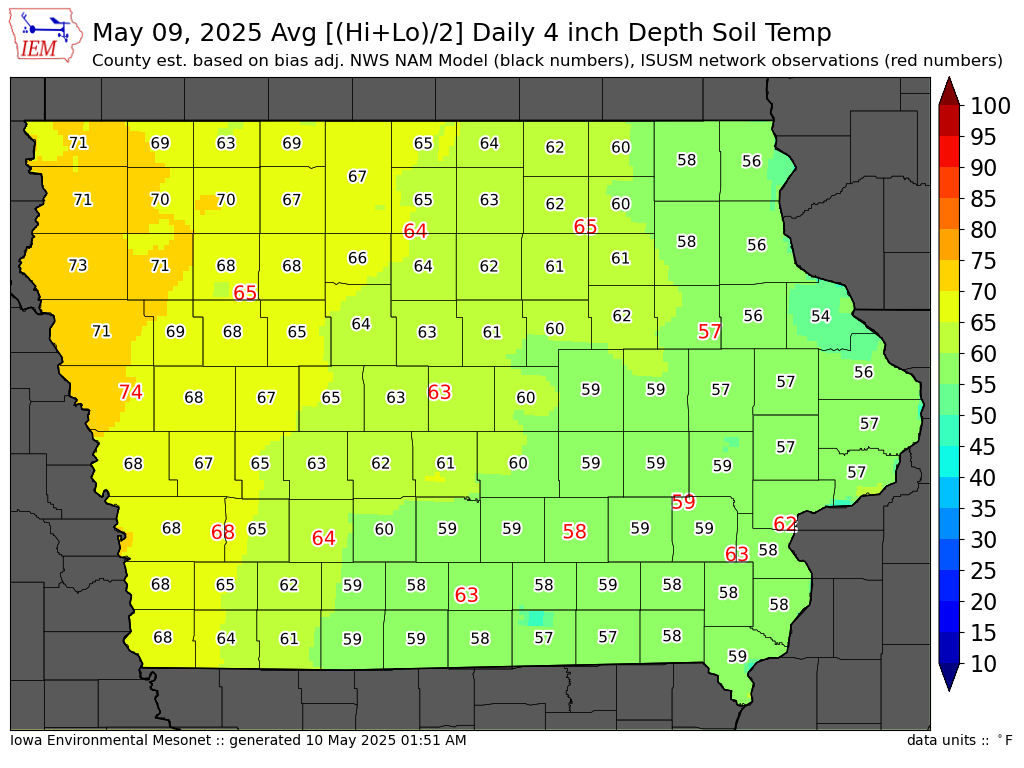April 23, 2013
Another
week behind us and another week of abnormal rainfall mixed with cold temperatures.
The graph below shows rainfall totals from the past 7 days. Our area was
fortunate to avoid the heaviest rains which have caused some serious flooding
in southeast Iowa. These rainfalls, although frustrating, have provided relief
from the past years drought. Below is
the most recent drought monitor released by the USDA this past Thursday. As you
can see eastern Iowa has been lifted from the drought status. Add together the
drought relief; a warm dry seven day forecast and things seem to be shaping up into
favorable spring conditions.
 |
| Rainfall Totals April 16, 2013-April 22, 2013 |
These
spring rains bring many benefits to the ground soil. They provide moisture to
recharge the soil profile which will significantly improve our soil moisture
conditions for early-season growth and the rest of the growing season. Along
with these benefits there are also some immediate negative impacts these rains can
have on our soil such as, soil erosion and soil compaction.
First
we will take a look at soil erosion.
Fields with intensive fall tillage can experience significant amounts of soil
erosion. Fall tillage alters the soil surface enough to cause it to almost seal
off which in return leads to more soil and sediment loss when heavy rains arrive.
The main factor when it comes to soil erosion is the lack of residue on the
soil surface. Fields that used cover crops or no-till practices will experience
less soil erosion because of the residue left on the top soil. Residue
management, buffer strips and waterways are all ways one can help slow water movement
and provide more opportunity for water to penetrate into the soil profile.
Another
concern with heavy spring rains is soil
compaction. Wet soil conditions present a challenge when it comes to spring
field operations. As we all know we need to try and avoid entering fields when
soil moisture is at or above field capacity, this is when the risk of soil
compaction is at its greatest. Soil compaction can also occur at planting which
can cause damage to the corn’s root system, which in return affects its ability
to transport nutrients from the soil to the plant. It is important to monitor
the top 6 inches of soil moisture before you decide to enter the field.
Thanks
for reading and don’t forget to stop in next week where we will update you with
the construction progress in Jackson and talk about planting corn.
Citations
(http://www.extension.iastate.edu/CropNews/2013/0419alkaisi.htm),
Spring Rain: The good and the ugly.
(http://droughtmonitor.unl.edu/)





